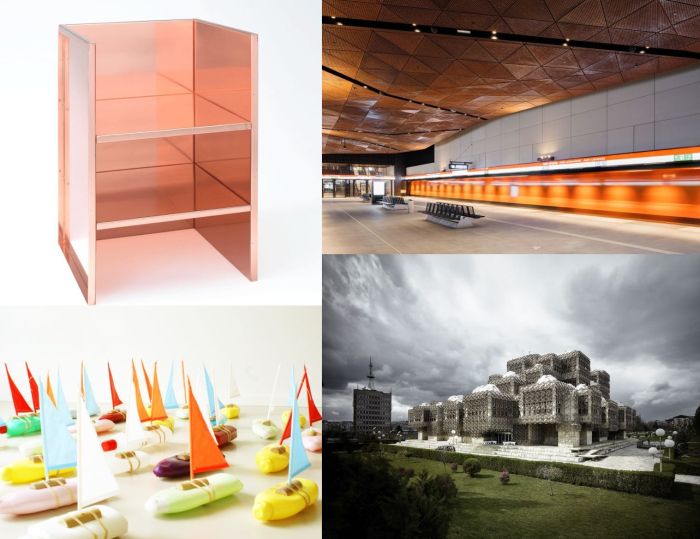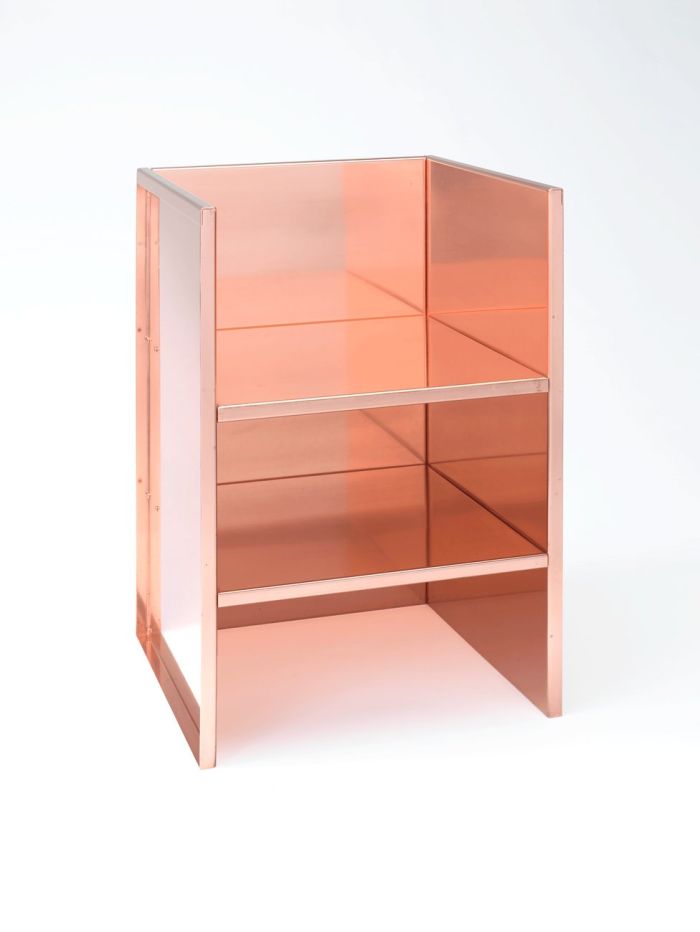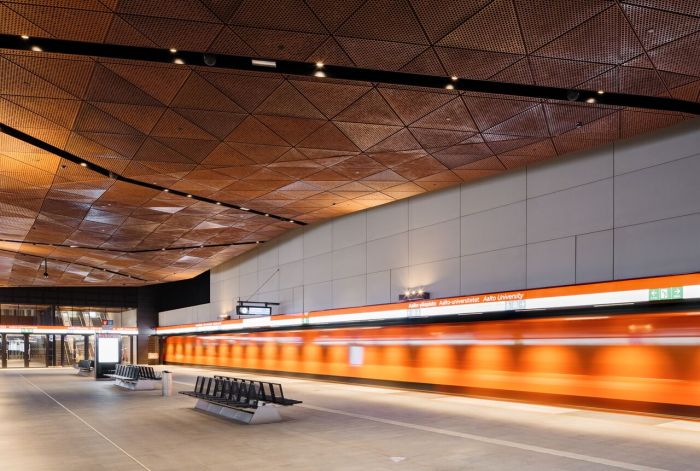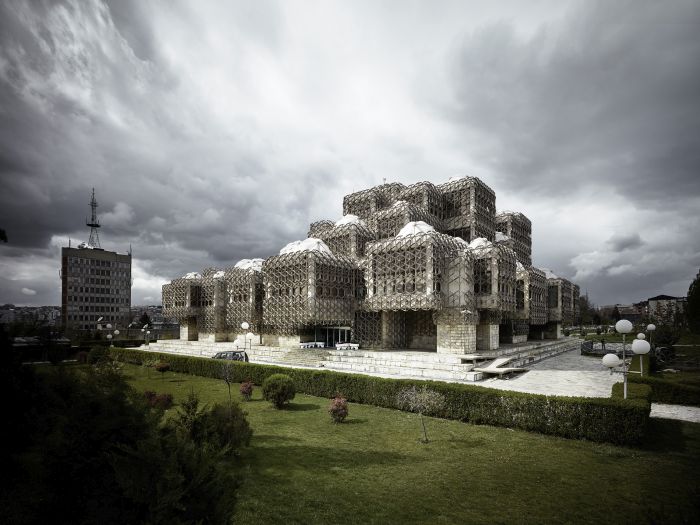5 New Architecture & Design Exhibitions for July 2018
The Dog Days of summer are with us and, as is traditional, the international curatorial community have removed themselves to the cooler climes of their storerooms, archives and libraries to sit out the heat until autumn’s bracing breeze tempts them back out.
Which, logically, means a great sparsity of new architecture and design exhibitions opening in July 2018.
A sparsity however isn’t a nontity and in four of the world’s cultural and meteorological hotspots one finds exhibition curators more accustomed to the heat and humidity of July……

“Donald Judd. Specific Furniture” at the San Francisco Museum of Modern Art, San Francisco, California
“Almost all furniture made since the 1920s and much before in any of the “styles,” “modern” and “traditional,”” opined the American artist, designer and critic Donald Judd, “has been junk for consumers.”1
While we would tend to disagree, we do understand where he is coming from, but for all are thankful that he was of such an extreme opinion: leading as it did to him not only designing his own furniture, but reflecting at length on the essence of furniture, the furniture industry and the borders between art and design.
Furniture and reflections which can be considered in the San Francisco Museum of Modern Art’s exhibition Specific Furniture.
Donald Judd’s furniture is characterised by its infuriating reduction, often nothing more than a couple of lengths of wood joined together by the most basic of joints, and by the all-embracing fascination it elicits, or at least can elicit, in the viewer. “”Complicated,” incidentally, is the opposite of “simple,” not “complex,” which both may be”, wrote Judd, and his furniture can fairly be described as being complexly simple.
With his furniture Donald Judd didn’t necessarily do anything greatly new, yet there is and was a conviction, consistency and honesty in the way he did what he did; but for all the way he did what he did allows for a differentiated perspective on furniture, the role of furniture and demands of a piece of furniture.
In addition to a presentation of some 30 examples of Donald Judd’s furniture supported by 25 preparatory sketches/drawings, a particularly interesting aspect of Specific Furniture promises to be examples of furniture by other designers collected by Donald Judd, including works by the likes of Gustav Stickley, Alvar Aalto, Gerrit T. Rietveld or Ludwig Mies van der Rohe, and works which will not only stand in discourse with Judd’s own works, but also, hopefully, help lead viewers to the reasons for the exceptions implied in the above quote, and therefore a more complete understanding of Donald Judd’s understanding of furniture.
Equally pleasing, and because they are obviously avid readers of this blog in San Francisco, examples of Judd’s furniture will be available for visitors to test and experience for themselves. The sitting experience being, as ever, key to any judgement of a chair.
Donald Judd. Specific Furniture opens at the San Francisco Museum of Modern Art, 151 Third Street San Francisco, CA 94103 on Saturday July 14th and runs until Sunday November 4th
1. Donald Judd, It’s Hard to Find a Good Lamp, 1993 http://judd.wpengine.com/wp-content/uploads/2016/04/Its_Hard_To_Find_A_Good_Lamp_1993.pdf Accessed 30.06.2018

Donald Judd, Armchair, 1984, part of Donald Judd. Specific Furniture at the San Francisco Museum of Modern Art (Photo © & courtesy of San Francisco Museum of Modern Art)
“Nordic Urban Spaces” at Felleshus, Berlin, Germany
Aaahh Scandinavia! Beautiful people wearing beautiful clothes sitting in beautiful homes with beautiful furniture eating beautiful food from beautiful plates!
Yet despite all our inherent cynicism at the popular (social) media impressions of Scandopia, and for all the troublingly unquestioning manner with which society willingly absorbs them, whenever we’re in Scandinavia we do kind of always wish we could stay a little longer. And do spend a good part of our days finding almost childish delight in small aspects of daily life, urban design and social coexistence, that we only know in Scandinavia. And find most appealing.
Currently very keen on Malmö.
Realised in conjunction with the Institut für Stadt- und Regionalplanung at the TU Berlin, Nordic Urban Spaces promises to present examples of contemporary Scandinavian urban planning, architecture and public participation processes which are, one imagines, proposed as possible solutions for elsewhere. Whereby for all the mention of public participation processes catches our attention, being as it is one of the keys to sustainable development.
Scandinavia doesn’t have all the answers, Scandinavia has problems, Scandinavians make mistakes, last time we were in Sweden our high speed, inter-city, train broke down; however, Scandinavian designers, architects and urban planners have developed some very interesting solutions, and understanding how others approach problems you invariably also have, can, must, help you approach your own solutions.
Nordic Urban Spaces opens at Felleshus, Nordic Embassies Cultural Centre, Rauchstraße 1, 10787 Berlin on Friday July 6th and runs until Friday September 28th

Aalto University Metro Station, Espoo by ALA Architects and Esa Piironen Oy (Photo courtesy Felleshus, Nordic Embassies Cultural Centre)
“Toward a Concrete Utopia: Architecture in Yugoslavia, 1948–1980” at the Museum of Modern Art, New York, New York
Although it is very easy to remember Yugoslavia as having been part of the former eastern European Warsaw Pact. It wasn’t. Yugoslavia was in fact a founding member of the Non-aligned Movement, along with nations as diverse as India or Ghana, and thus although geographically part of Eastern Europe was politically removed from not only the socio-cultural pressures of the Cold War but also the unhelpful socio-cultural influence of either Soviet or US imperialism.
According to the Museum of Modern Art, MoMA, New York this status allowed for the development of a unique and singularly Yugoslavian architecture in the post-War decades, a position they aim to elucidate and explain in the course of Toward a Concrete Utopia: Architecture in Yugoslavia, 1948–1980.
Whereby as the title implies, one material sounds like dominating; even if the ideology behind its use and the aims of the architects using it were fundamentally differing.
Promising a presentation of some 400 objects, including drawings, photographs, models and films which highlight and explore works by the likes of Svetlana Kana Radević, Milica Šterić or Edvard Ravnikar, Toward a Concrete Utopia sounds not only like being an interesting exploration of Yugoslavian architecture, but also an exhibition which allows for new perspectives on the wider story of the development of architecture in post-war Europe. East, West and Non-aligned
Toward a Concrete Utopia: Architecture in Yugoslavia, 1948–1980 opens at 18 West 54 Street, New York, NY 10019 on Sunday July 15th and runs until Sunday January 13th

National and University Library of Kosovo, Priština by Andrija Mutnjaković, 1971–82 (Photo: Valentin Jeck, 2016, commissioned by © and courtesy of the Museum of Modern Art New York)
“The Limits to Growth! Design and no-growth” at the Centre d’Innovation et de Design au Grand-Hornu, Hornu, Belgium
In 1972 the Club of Rome published the report “Limits to Growth”, in which the authors explained that the earth’s resources were finite and that if we didn’t change our ways, didn’t stop focusing on uninterrupted growth be that it in terms of population, industrial production, private consumption, et al, we were, quite frankly, doomed.
And a message that for neigh on 50 years has been acknowledged, regularly repeated and roundly ignored. At least by those in positions to make meaningful changes. By which we also mean you, dear reader, living as we all are in a society obsessed with the selfish accumulation of as much as possible before our inevitable deaths.
Others did paid more attention, arguably as first the hippies, a group who in any case were very receptive to such a message, and in recent years ever more of us have began to understand the enormity of the problem and the increasingly urgent need for changes. Including designers.
Promising projects from some 30 artists and designers, including design studios as diverse as Christien Meinderstma, OpenStructures, Studio Swine or Julien Phedyaeff, The Limits to Growth! aims to explore how designers can contribute to creating a world that won’t self-destruct. Rather than that which designers so often do, contributing to world which inevitably will. Must.
Divided into six sections exploring deliberate simplicity, recycling, local production, low-tech, fighting against programmed obsolescence and new economic models The Limits to Growth! sounds as much as an exhibition about the responsibilities, function and relevance of design and designers as we move through the 21st century, as it is a presentation of the designers’ projects.
The Limits to Growth! Design and no-growth opens at the Centre d’Innovation et de Design au Grand-Hornu, Rue Sainte-Louise, 82, 7301 Hornu on Sunday July 1st and runs until Sunday October 21st.
Tagged with: Berlin, CID - centre d'innovation et de design, Donald Judd, Felleshus, Hornu, Limits to growth!, moma, New York, Nordic Urban Spaces, San Francisco, Yugoslavia
